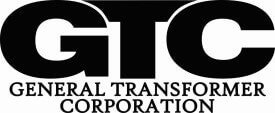What is Optimum Regulation in Line Conditioners?
One of the purposes of a line conditioner is to provide a regulated output voltage. Regulation is a measure, frequently stated as a percentage, of how close to nominal a line conditioner maintains its output voltage, despite changes in input (line) voltage and load.
EMAX DEFENDER line conditioners are designed to provide your loads with the power quality they need, at high efficiency. This is called optimum regulation.
EMAX DEFENDER Line Conditioner
How to Find the Optimum Regulation of a Line Conditioner
A line conditioner may be advertised as having +/-1% regulation. This would mean that a nominal 120 volt output would remain between 118.8 volts and 121.2 volts. Generally, a careful reading of the fine print will reveal that this is a specification covering only a limited input or load range.
While 1% regulation is achievable, at least over some range of conditions, it’s a mistake to try and regulate too closely. A tight regulation specification may look good, but it comes at the price of increased size, cost, and power consumption. Rather than try to achieve an arbitrary measure of “good” regulation, it makes far more sense to provide the load with what it actually needs for dependable operation.
Unless the manufacturer(s) of your load(s) state otherwise, it’s generally safe to assume that compliance with the widely accepted industry standard (ANSI C84.1) will be suitable.
This standard gives two ranges for nominal 120 volt loads: Range “A,” considered “near-optimal”, allows input from 108 volts to 126 volts. Range “B,” considered “acceptable,” allows an input from 104 volts to 127 volts.
For 240 volt loads, you can simply double those numbers. Does it make any sense to sacrifice size, cost, and efficiency to achieve “tight” regulation? No, it does not. We recommend using the “A” range, or “near-optimal”, specifications.
EMAX DEFENDER Line Conditioners Achieve Optimum Regulation
The chart below shows regulation with both line and load for four different minimum load voltages. While this is the chart for an EMAX DEFENDER 1200 va, you can see similar data for all models here.
To use it, simply select the curve corresponding to the minimum voltage acceptable to your load(s). Find the maximum load power required on the horizontal axis, go up to the appropriate output voltage curve, and then left to the vertical axis to find the minimum input (line) voltage at which regulation will be maintained.
For example, assume a 1000 watt load and a 108 volt minimum load voltage, compliant with “A” range specifications. Minimum input (line) voltage, to maintain regulation, is about 85.8 volts (just 71.5% of nominal).

If we want to be more conservative, assume a minimum load voltage of 110 volts. Using that curve, we can see that we provide regulated power to the load with input as low as 87.4 volts, less than 73% of nominal. And the efficiency curve for this model tells us that we’re doing so with nearly 90.2% efficiency.
Contact General Transformer Today for EMAX DEFENDER Line Conditioners
Our EMAX DEFENDER line conditioners provide the size, cost, and efficiency that your application requires. They will meet your power requirements while also providing high efficiency.
To learn more about our line conditioners, contact us today or request a quote.



